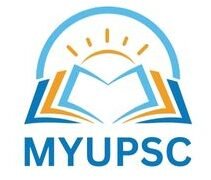Multiple Choice Quiz Questions (MCQs) on Indian Economy for General Studies and GK preparation of SSC, NDA, CDS, UPSC and State PSC Exams.
- Join our Official Telegram Channel HERE for Motivation and Fast Updates
- Subscribe to our YouTube Channel HERE to watch Motivational and New analysis videos
Read more: Objective GK & GS Multiple Choice Questions and Answer
Read more: Most Important Current Affairs MCQs
Read more: Current Affairs Monthly MCQs
Read more: Must Read Books for Competitive Exams
Multiple Choice Quiz Questions (MCQs) on Indian Economy
Multiple Choice Quiz Questions (MCQs) on Indian Economy
Q. The term ‘Kostak rate’ sometimes seen in news, is related to:
(1) Money Market
(2) Minimum Support Price (MSP)
(3) Initial Public Offer (IPO)
(4) Gross Domestic Product
Answer: (3)
It relates to an IPO application. So, the rate at which an investor buys an IPO application before the listing is termed the Kostak rate. Hence, option (3) is correct.
Q. Ad Valorem Tax is levied on the basis of which among the following?
[1] Volume
[2] Value
[3] Production
[4] Export
Answer: 2 [Value]
Notes:
Ad valorem tariff is calculated on the basis of the value of the imported good, expressed as a percentage of such value. For example, an ad valorem tariff of 10% on an imported car worth US$ 10000 would lead to a requirement to pay US$ 1000 as customs duty.
Q. Which among the following bodies estimates the national income of India?
[1] Office of the Economic Advisor
[2] Ministry of Statistics
[3] Central Statistical Office
[4] Ministry of Finance
Answer: 3 [Central Statistical Office]
Notes:
The Central Statistics Office (CSO) is a governmental agency in India under the Ministry of Statistics and Programme Implementation. It is responsible for estimating National Income, Index of Industrial Production and Consumer Price Indices.
Q. Minting of Government medals is done at following places?
[1] Hoshangabad
[2] Nasik & Dewas
[3] Kolkata & NOIDA
[4] Mysore and Mumbai
Answer: 3 [Kolkata & NOIDA]
Notes:
Meldals of national importance are minted in India at “Security Printing and Minting Corporation of India” Kolkata and India Government Mint in Noida. These Mints undertakes production of Medals for civilian & military awards instituted by the Government of India like Bharat Ratna, Padma Shri, Padma Bhushan, Paramvir Chakra, Mahavir Chakra etc.
Q. When a person has a saving account in the bank , the bank assumes the position of ___?
[1] Debtor
[2] Creditor
[3] Agency
[4] Depositor
Answer: 1 [Debtor]
Notes:
Please note bank functions as an agent or agency when it buys or sells securities on behalf of the customer or collects and makes payment on behalf of the customer
Q. In which of the five year plan in India, the concept of Financial Inclusion was included for the first time?
[1] 8th Five Year Plan
[2] 9th Five Year Plan
[3] 10th Five Year Plan
[4] 11th Five Year Plan
Answer: 4 [11th Five Year Plan]
Notes:
The 11th Five Year Plan was implemented from 2007-2012, when Manmohan Sigh was India’s Prime Minster. The main slogan for the 11th FYP was “Faster and more inclusive growth”. The 11th FYP made special emphasis on Financial Inclusion, poverty reduction, empowerment through education and skill development etc.
Q. The unemployment of a person when he/ she is in midst of transiting between jobs, searching for new job comes under which of the following category?
[1] Cyclical
[2] Voluntary
[3] Frictional
[4] Seasonal
Answer: 3 [Frictional]
Q. Hundies are normally __________?
[1] Cheque
[2] Bills of Exchanges
[3] Bills of Purchase
[4] Bills of Lading
Answer: 2 [Bills of Exchanges]
Q. Which among the following is a major qualitative control measure in India ?
[1] Bank Rate Policy
[2] Open market Operations
[3] Ways and means advances
[4] Margin Requirements
Answer: 4 [Margin Requirements]
Notes:
Qualitative or selective methods of credit control refer to those methods which limit the nature or variety of money supply rather than its quantity. Such methods include regulation of margin requirement, credit rationing, regulation of consumer credit and direct action.
Q. The banks keep the Margin Requirements for the primary purpose of which of the following?
[1] To fulfill RBI requirements
[2] To keep themselves Basel II compliant
[3] To maintain a cushion against the decline of value of security
[4] To earn profit
Answer: 3 [To maintain a cushion against the decline of value of security]
Q. Consider the following imaginary figures in context with the “Components of Money Stock”.
1. Currency in Circulation is Rs. 1000
2. Cash with Banks is Rs. 20
3. “Other” Deposits with RBI is Rs. 15
4. “Bankers” Deposit with RBI is Rs. 40
5. Demand Deposits is Rs. 500
6. Time Deposits is Rs. 400
Which among the following is the correct figure representing “Broad Money“?
[A] Rs. 1035
[B] Rs. 1075
[C] Rs. 1535
[D] Rs. 1895
Answer: D [Rs. 1895]
